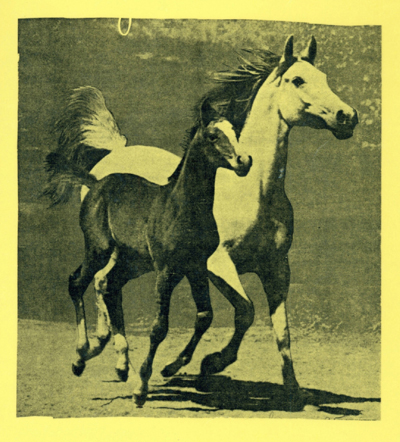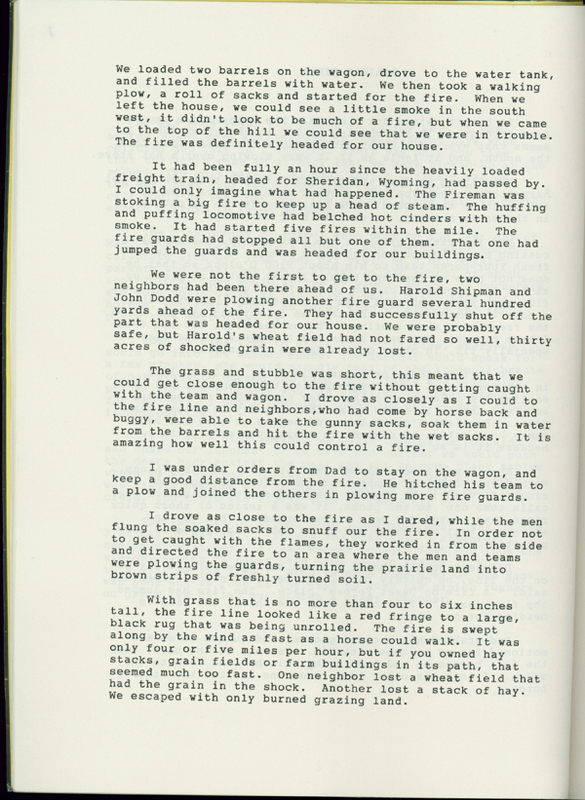018
Item
-
Title
-
018
-
Transcription
-
We loaded two barrels on the wagon, drove to the water tank, and filled the barrels with water. We then took a walking plow, a roll of sacks and started for the fire. When we left the house, we could see a little smoke in the south west, it didn't look to be much of a fire, but when we came to the top of the hill we could see that we were in trouble. The fire was definitely headed for our house.
It had been fully an hour since the heavily loaded freight train, headed for Sheridan, Wyoming, had passed by. I could only imagine what had happened. The Fireman was stoking a big fire to keep up a head of steam. The huffing and puffing locomotive had belched hot cinders with the smoke. It had started five fires within the mile. The fire guards had stopped all but one of them. That one had jumped the guards and was headed for our buildings.
We were not the first to get to the fire, two neighbors had been there ahead of us. Harold Shipman and John Dodd were plowing another fire guard several hundred yards ahead of the fire. They had successfully shut off the part that was headed for our house. We were probably safe, but Harold's wheat field had not fared so well, thirty acres of shocked grain were already lost.
The grass and stubble was short, this meant that we could get close enough to the fire without getting caught with the team and wagon. I drove as closely as I could to the fire line and neighbors,who [sic] had come by horse back and buggy, were able to take the gunny sacks, soak them in water from the barrels and hit the fire with the wet sacks. It is amazing how well this could control a fire.
I was under orders from Dad to stay on the wagon, and keep a good distance from the fire. He hitched his team to a plow and joined the others in plowing more fire guards.
I drove as close to the fire as I dared, while the men flung the soaked sacks to snuff our the fire. In order not to get caught with the flames, they worked in from the side and directed the fire to an area where the men and teams were plowing the guards, turning the prairie land into brown strips of freshly turned soil.
With grass that is no more than four to six inches tall, the fire line looked like a red fringe to a large, black rug that was being unrolled. The fire is swept along by the wind as fast as a horse could walk. It was only four or five miles per hour, but if you owned hay stacks, grain fields or farm buildings in its path, that seemed much too fast. One neighbor lost a wheat field that had the grain in the shock. Another lost a stack of hay. We escaped with only burned grazing land
-
Rights
-
To inquire about usage, please contact Archives & Special Collections, University of Nebraska-Lincoln Libraries. These images are for educational use only. Not all images are available for publication.
 Metzger Memories
Metzger Memories


